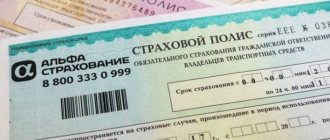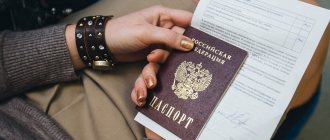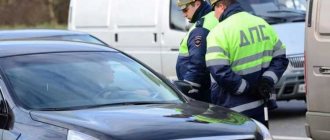Considering various situations related to continuous markings and the actions of drivers while driving, it is impossible not to mention such a common case as a U-turn and a turn through a continuous one. It seems that the type of road markings is the same, but unlike overtaking across a continuous road or driving into oncoming traffic, a U-turn (turn) has a fundamentally different offense.
It cannot be said that such a maneuver is permitted, but the severity of the punishment for it is not comparable with other cases, with, of course, exceptions. About why this happened, what is the penalty for turning across a solid line, and about other details of the violation - in detail in this article.
Is it possible to cross single and double lines according to traffic rules?
No you can not.
SDA and GOST define special numbering for continuous marking lines:
- 1.1. – for single,
- 1.3. – for a double solid line.
Both of these lines separate traffic flows in opposite directions. But a single continuous line is different from a double solid line. However, this is not so important. Indeed, in terms of the ban on the intersection of these two markings and the amount of fines, it is a complete coincidence.
According to Section 1 of Appendix 2 to the Traffic Regulations:
Lines 1.1, 1.2 and 1.3 are prohibited from crossing.
If you cross a single or double solid line, you will be penalized. But not for crossing the markings itself, but for a specific maneuver that goes against the traffic rules. For example, for a turn through a double continuous line. And below we will talk about the sanctions that await those who violate them.
Traffic regulations requirements for drivers
In the Road Traffic Regulations, a double solid line refers to marking stripes painted with white paint parallel to each other along the roadway. As a rule, such markings are permanent.
Clause 9.2 of the Russian Federation Traffic Regulations 9. The location of vehicles on the roadway explains that you cannot cross such a line in order to avoid creating an emergency situation on the road. If you need to make a maneuver on the road, but the line restricts freedom of movement, you need to get to the nearest intersection in the direction of travel and perform all the necessary maneuvers there.
What is the marking line for?
The purpose of white stripes is to separate moving traffic flows.
Unlike the usual solid line, two are applied on a roadway where there are more than two lanes for vehicle traffic on each side. On such roads, in order to be able to change the direction of movement, in some places a section of a solid line is replaced by dashes. This type of marking allows you to cross the dividing strip from the side of the stroke.
Why can't you cross it?
This maneuver creates a dangerous situation on the road, is considered a violation and is subject to punishment. Its size is determined depending on the circumstances of the violation.
What is the penalty for crossing a single or double solid line in 2021?
Let's look at the most common violations on the road, for which the driver can receive a fine, and in some cases remain without a license for six months.
When turning through continuous markings
Fine from 1,000 to 1,500 rubles.
We are talking about a maneuver when you decide to turn 180 degrees on the roadway. But you do this not in a permitted place, but on a road with a single or double marking line. Turning around, you find yourself in traffic in the passing lane. And this saves you from a more severe punishment in the form of deprivation of rights. After all, in the case of a U-turn, there is no entering the oncoming lane - the maneuver involves crossing the oncoming lane. That is why for such a pirouette of your car you will be fined from 1,000 to 1,500 rubles - in accordance with Part 2 of Art. 12.16 Code of Administrative Offenses of the Russian Federation.
By the way, there are special sections of the road for legal U-turns. There you can make a maneuver without worrying that you will be noticed by a camera or a big-eyed traffic police inspector - and there will be no fine for turning around. That's it!
When turning left
A similar punishment is a fine of 1,000 to 1,500 rubles.
But in this case, you can run into a much more serious sanction. Therefore, it makes sense to consider three maneuvers with penalties for each of them:
- Turn left 90 degrees while crossing a single or double solid line . For example, you were driving along the main road and decided to turn into the adjacent territory through a “forbidden” zone. For a maneuver not prescribed by the traffic rules, you will be fined in the amount of 1,000 to 1,500 rubles under the same part 2 of Art. 12.16 of the Code.
- Changing lanes to the left within the lane of passing traffic . Changing lanes from row to row, even across a continuous one, is classified as a violation of the markings. The fine is much smaller, only 500 rubles - but only under the first part of Article 12.16 of the Administrative Code. Moreover, you can get off with a warning from the traffic police inspector.
- Driving in oncoming traffic before turning left . Here you can already run into the most unpleasant punishment in the form of a “fork” - a fine of 5,000 rubles, or deprivation of rights for a period of 4 to 6 months (Part 4 of Article 12.15 of the Code of Administrative Offenses of the Russian Federation). The point is that you didn't just cross the road before turning left. Before this, you drove into oncoming traffic and moved along it before the main maneuver. For example, driving around a slowly moving car in front. This cannot be done; it creates the risk of a serious accident. That's why they are punished more severely. A fine can be issued by the head of the traffic police, but deprivation of rights is possible only in court. But again, in court there is a chance to get off with a monetary penalty.
As you can see, turning left across a solid road can be different. Therefore, the range of punishments also differs - from a warning to actual deprivation of a driver’s license for six months.
When turning right
Fine 500 rubles. But you can get off with a warning.
The essence of the maneuver is that the driver does not have time to change lanes into the desired lane in time, and as a result is forced to turn right from the wrong lane and straight across the solid line. Most often, such conventions can be found in megacities such as Moscow.
When leaving the yard
The fine is the same - 500 rubles.
What's happening? The driver leaves the adjacent area (yard, gas station) and turns left through a single or double lane. It would be wiser to first turn right, drive to the nearest U-turn and get into the desired lane.
But the driver acts in violation of traffic rules, that is, in this case he does not comply with the requirements of road markings, namely the prohibition to cross lines 1.1 and 1.3. The current penalty for such a maneuver is 500 rubles.
Exit path when turning left from the adjacent territory
In order to understand exactly what sanctions a motorist will face, it is necessary to carefully study the situations in which a prohibited action is committed.
two lane road
When entering a 2-lane road from an adjacent area (parking lot, secondary street, courtyards) and attempting to make an illegal turn to the left, motorists are forced to describe an arc into the oncoming lane. The reason for this is that any 2-lane road is not wide enough (see Figure 1).
A car cannot cross the dividing line at an angle of 90 degrees and make a turn already in the lane allowed for traffic, since the curb on the opposite side of the street will not allow it to do so.
Based on this, you need to remember: an attempt to turn left when entering a 2-lane road with a continuous single line marking will definitely be punishable by a fine of 5 thousand rubles.
Four lane road
When driving onto a 4-lane road and making an illegal left turn on it, the driver has a chance to avoid the most severe punishment and get off with a fine of 1 to 1.5 thousand rubles for turning. However, to do this, he needs to move to SLR 1.3, strictly perpendicular to it, and start turning only after crossing it (see the trajectory of the vehicle in Fig. 2).
At the slightest deviation from the direction of movement perpendicular to the flow of traffic, the traffic police inspector who has recorded a prohibited maneuver will have every right to fine the violator 5,000 rubles.
What is the punishment if I drive or hit a solid line with my wheel?
Often, when leaving an intersection, a car runs over or hits a solid marking line.
What follows? If a continuous line separates two passing lanes, then there is a chance of being fined 500 rubles or getting off with a warning. But if you hit a solid road that separates the oncoming and passing directions, this will no longer work. At best, you face a fine of 5,000 rubles, and at worst, you risk being left without a license for up to 6 months (Part 4 of Article 12.15 of the Code of Administrative Offenses of the Russian Federation). And it doesn’t matter how many wheels hit the continuous line - at least one, at least two.
Recording violations with an automatic traffic police camera
Even if there is no traffic police post on the road at the moment, you still need to be careful. Cameras are watching you. Ten years ago, almost all major roads and highways were equipped with them. The surveillance is carried out in photo and video format, so the slightest nuance of your movement will be noticed.
In order for cameras to perform at their level, they are systematically put through calibration. Each video camera is equipped with technical documentation confirming their serviceability and ability to be used on the road where a double solid line is drawn.
The cameras work well enough to record not only violations of the rules. The device will record the car brand that committed the violation. The date and time when the violation was discovered will also be written off.
Devices whose data can be used as evidence:
- Mobile. This type of camera can be used manually. They are used by traffic police inspectors who stand on duty and monitor the observance of order on the road, where a double solid line is drawn, the crossing of which is prohibited.
- Stationary. The type of device in question is mounted on poles or other objects that are high and will allow you to get a good overview.
Most modern cameras provide excellent images not only during the day, but also at night. The camera sees how drivers behave in fog, slush, rain and even heavy snow. Faulty cameras are quickly found and replaced with fully working ones. It is important that the camera that recorded the offense is licensed and has passed a technical check. Otherwise, the fine or deprivation of rights can be challenged in court.
What is the penalty for repeat violation?
There is no “repetition”, as in the case of driving in oncoming traffic or “against the grain” on a one-way road.
Here's an example:
In the morning you turned around through a continuous road in full view of the police, and they gave you a fine of 1,500 rubles. In the evening of the same day, you decided to turn into the yard through a single solid road, and again got caught by traffic inspectors. In this case, you will not be able to be punished more seriously, but will be issued the same fine under Part 2 of Art. 12.16 of the Administrative Code, and its size is from 1,000 to 1,500 rubles.
The maximum penalty is a fine, without any relapses and tougher sanctions for repetition.
Do the cameras detect a turn or turn through a solid line?
Yes. If there are photo and video cameras on the road section where the violation occurred, the prohibited maneuver will not escape the radar.
- For violations, only “chain letters” are sent to the camera (deprivation of rights is not provided).
- When cameras record a U-turn or a left turn across a solid line, a fine of 1,000 rubles will be imposed - as the smallest of the range of monetary penalties under Part 2 of Art. 12.16 of the Code.
On a note! You can find out the places where automatic recording cameras are located on the official website of the traffic police. The service is freely available. It shows not only stationary, but also mobile complexes of photo and video recording of traffic violations on different sections of roads in your region.
How is a violation detected?
All traffic violations are recorded by photo and video cameras. They are usually installed along the edge of the roadway, of which drivers are notified using special road signs. Cameras do not clearly distinguish the circumstances under which the rules of behavior on the road were violated, therefore the Protocols drawn up on their testimony are often unreliable.
The “letter of happiness” generated based on the filmed event will set the maximum amount of the fine, since the resolution and capabilities of the cameras do not allow us to determine the nuances of the incident. If the driver is confident in the illegality of the actions of authorized representatives of the traffic police, then he has the right to appeal the decision. This is possible within 10 days from the date of receipt of the prescriptive document. Carrying out the event allows you to reduce the fine from 5,000 to 1,000 rubles. Repeated violation of traffic rules in the area of intersection of markings by a vehicle as a result of its maneuvers may result in deprivation of the right to drive a vehicle for a period of 6 months.
Is it possible to appeal a fine for a solid line?
If you disagree with the sanction for a violation, you can file a complaint. It must be justified. Typically, drivers try to appeal a fine for a solid line in the following situations:
- Extreme necessity . The essence of the action is described in Art. 2.7 of the Code of Administrative Offenses of the Russian Federation, when the consequences of the violation are less than those of the one prevented. For example, an emergency situation forced you to turn around through a double solid line - because you needed to urgently transport a passenger to the hospital or stop at the edge of the roadway to provide first aid (if there was no such opportunity on the right).
- Erased line . Road markings tend to fade, causing drivers to feel like there is a broken line ahead. This means there is an opportunity to make a U-turn or turn left. But in 99% of cases, traffic police inspectors will draw up a report and issue a fine. A similar fine may come from cameras. The driver is recommended to record the erased marking line in order to subsequently attach photos and videos to the complaint about the fine.
- Driving a car not by the owner . If the driver was not the owner of the vehicle, but a third party, then the fine will still come to the owner of the car. Of course, you can pay the amount immediately. Or you can appeal the fine, pointing out to the court that the culprit was not the owner of the car, but, for example, his “beloved” mother-in-law or brother.
- Auto fix camera error . Most often, cameras incorrectly read the car number. For example, you were driving behind a driver who turned around across a solid line, and the camera mistakenly read the license plate of your car, although you did not violate anything. The decision is subject to appeal to the Central Election Commission or in court.
- Procedural violations . For example, a traffic police officer incorrectly indicated in the protocol the place or time of the violation. This also includes errors with the vehicle brand. But typos in the name of the violators are not taken into account.
- Inconsistency between signs and solid marking line . For example, a road sign allows a left turn, but there is a single or double continuous line marking on the road. This happens when signs are temporary. And the punishment can and should be appealed. With the attachment of photos and video evidence that you are right.
It is also worth mentioning such reasons as the insignificance of the offense, the expiration of the statute of limitations and the presence of mitigating circumstances for the driver.
Where to contact?
A complaint against a violation decision is submitted:
- To the traffic police - on the website, in the “Acceptance of applications” section, by Russian post or in person to the traffic police office;
- To the district court where the offense was committed.
Practice shows that it is better to go straight to court. You must first collect as much evidence as possible of your innocence or provide reasons for mitigating the punishment.
In what cases can sanctions be avoided?
Despite the clarity of the wording of the traffic rules and the severity of the Code of Administrative Offenses, which provides for various sanctions for violations on the road, there are situations in life when a motorist can still be forgiven for prohibited maneuvers and only receive a verbal reprimand (without a fine) as punishment.
Sign priority
Traffic regulations directly provide for the priority of signs (even those placed on the road temporarily) over stationary road markings. If a car turns across line 1.3 under a temporary sign allowing such a maneuver, its owner will not receive a fine for turning onto a double solid line.
Minority of the violation
Article 2.9 of the Code of Administrative Offenses establishes the concept of insignificant offense. Relying on it, a traffic violator may try to avoid punishment for making a prohibited U-turn (turn). True, for this the driver will have to go to court, since traffic police officers almost never take into account the factor of the insignificance of the violation and always draw up a report on its commission at the place where the offender was detained.
Judicial practice shows that most often, due to insignificance, you can avoid punishment for:
- minimal travel “against the flow” when turning left at an intersection (when the driver accidentally “cuts off” just a few centimeters of CPR);
- committing a prohibited maneuver on a road free from other vehicles (for example, leaving a courtyard onto an empty street and turning left through a continuous one, or making a U-turn on the same empty road in front of an obstacle, made in order to avoid driving around the latter in oncoming traffic).
Of course, for the factor of insignificant violation to work in court, the person accused of a traffic “crime” is obliged to cooperate as much as possible with the judge (as described above), and also he should not have aggravating circumstances.
Urgent necessity
Another basis for canceling the punishment for a prohibited maneuver through CPR is the concept of extreme necessity, prescribed in Article 2.7 of the Code of Administrative Offences. Thus, a person driving a car is almost guaranteed to be in no danger if he turns through a solid road in order to:
- avoid a collision with another vehicle;
- do not hit a pedestrian who has jumped onto the road;
- transport a sick passenger (a woman giving birth) to the hospital faster;
- park on the other side of the street, since the neighboring passing lanes were occupied, and he urgently needed to stop because he felt ill before performing a prohibited maneuver.
It should, however, be taken into account that the state of emergency has an indispensable condition: the harm caused by the prohibited maneuver through CPR must be less than the harm that the driver prevented by committing this offense. At the same time, the harm prevented should not be abstract, but concrete. And one more thing - the responsibility to prove that the harm caused was less than what was prevented falls entirely on the driver (his lawyer) in court.
No guilt
The defining concept in the Code of Administrative Offenses is the presence of the driver’s guilt when he commits an unlawful act. If it is not there, in court the client’s lawyer can try to challenge the decision to impose a monetary penalty on his client (or confiscate the VP from him).
As a rule, the argument that the driver lacks intent to commit an offense is resorted to in a situation where the motorist turns left (turns around) through CPR without knowing it. This often happens on a snowy street or road where the markings are not visible due to mud.








